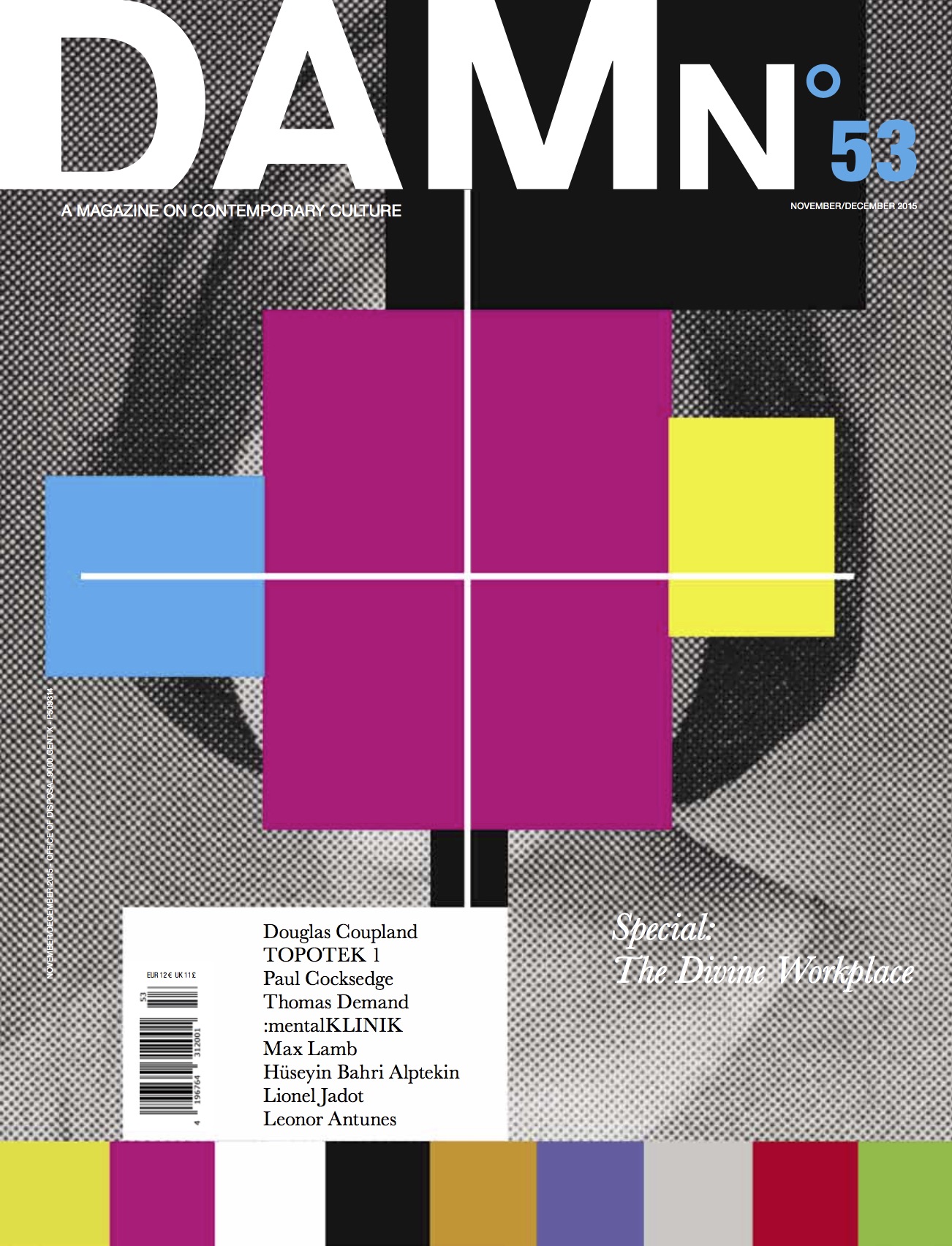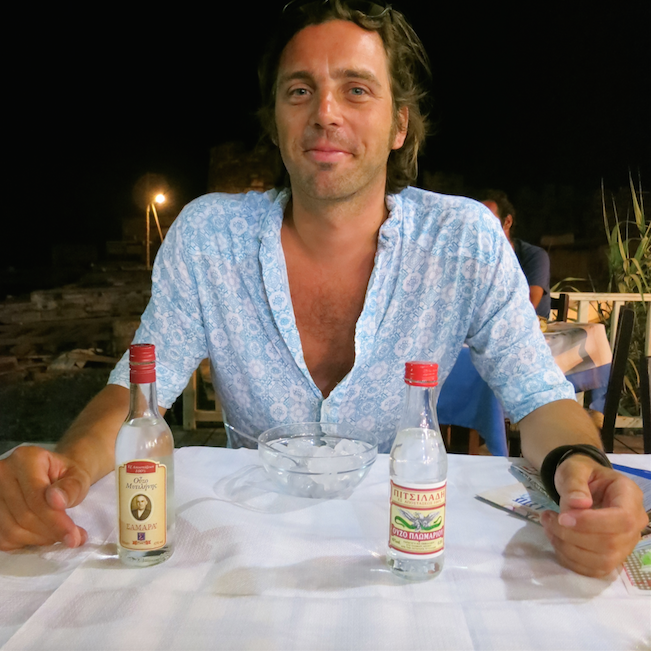Eight years after his untimely death, the work of Hüseyin Bahri Alptekin is being presented in a joint retrospective in Istanbul and Antwerp. Having an exhibition occurring simultaneously in two different countries is something that would have pleased Alptekin, a globetrotter whose diverse oeuvre revolves around themes such as globalisation, displacement, and cross-cultural influences. From all accounts not an easy-going person, the artist was however highly mindful and energetic, with a charismatic bent. On this occasion, DAMN° offers a portrait of Alptekin as an artist and as a person.
Although the Turkish artist passed-away at the tender age of 50, his legacy seems to be assured, as indicated by the steadily increasing international interest in his work. MoMA in New York recently bought some of Hüseyin Bahri Alptekin’s neon hotel sign pieces. And in Istanbul, Rampa Gallery is presenting a survey of his work that continues in a second, bigger show at M HKA in Antwerp, under the joint title Democratic Luxury. Alptekin was not only an interesting artist but was also influential in developing Istanbul’s young art scene. “He was an important figure for subsequent generations”, says Nav Haq, who curated the M HKA part of the exhibition, over a café latte in Istanbul’s Beyoğlu neighbourhood. “He supported younger artists, worked with them, and also set up LOFT, an artist-run space. He and a few fellow artists were basically the first generation to work internationally. Before that, there was almost nothing here. The subsequent generation is quite indebted to them.” Yet Alptekin turned to contemporary art rather late in life. “He was not trained as an artist”, says Haq. “He studied Derrida and the French school of philosophy at the Sorbonne, which clearly had an impact on his practice. His titles come from Derrida or Foucault, with notions like hostility or hospitality. In the late-1980s, he became interested in visual arts as a way to express his philosophical ideas.” That was – not surprisingly – during the period of the collapse of the Soviet Union, when Russian products started invading Turkish bazaars, as beautifully evoked in the work Turk Truck (1995), a used Russian truck loaded with cheap plastic footballs.
 “Alptekin was obsessed with the aesthetics of these Russian products and the movement of goods and people. There is a discrepancy between the promise these items imply and their banality”, Haq adds. That contrast is most strongly addressed in Capacity, the collective title for a series of works comprising of neon hotel signs that try to lure clients with exotic names like Hotel Lima, Paris Hostel, or Rio Hotel. In reality, these belonged to cheap hotels that attracted a motley crew of prostitutes, illegal immigrants, and cheap labourers who remained in the country after the fall of the Soviet Union. Alptekin realised the work in a series of neon lights as well as in pictures. The photos were taken during one of his many wanderings in the Laleli and Tarlabaşı districts of Istanbul. In fact, one could label him a kind of contemporary flâneur, walking as he did through the city and buying stuff that he would then assemble into collages. “He had a huge archive”, says Haq. “He was always buying things, collecting, researching, writing, travelling. In the end, this would manifest as an artwork. But he didn’t make so much art. The exhibitions in Istanbul and in Antwerp together constitute two-thirds of his total production.” That production is characterised by its versatility. Alptekin’s use of mediums is remarkably diverse. From photography – for example, capturing his stay in a sanatorium in Odessa – to video (e.g. a two-channel video at two beaches, one in Brazil, the other in Bombay, mingled with local soundtracks); from neon to mixed-media works like those with words embroidered on used hotel sheets. Within this variety, Alptekin managed to tackle a coherent set of themes (displacement, phantasmagoria, globalisation, mobility) in various ways.
“Alptekin was obsessed with the aesthetics of these Russian products and the movement of goods and people. There is a discrepancy between the promise these items imply and their banality”, Haq adds. That contrast is most strongly addressed in Capacity, the collective title for a series of works comprising of neon hotel signs that try to lure clients with exotic names like Hotel Lima, Paris Hostel, or Rio Hotel. In reality, these belonged to cheap hotels that attracted a motley crew of prostitutes, illegal immigrants, and cheap labourers who remained in the country after the fall of the Soviet Union. Alptekin realised the work in a series of neon lights as well as in pictures. The photos were taken during one of his many wanderings in the Laleli and Tarlabaşı districts of Istanbul. In fact, one could label him a kind of contemporary flâneur, walking as he did through the city and buying stuff that he would then assemble into collages. “He had a huge archive”, says Haq. “He was always buying things, collecting, researching, writing, travelling. In the end, this would manifest as an artwork. But he didn’t make so much art. The exhibitions in Istanbul and in Antwerp together constitute two-thirds of his total production.” That production is characterised by its versatility. Alptekin’s use of mediums is remarkably diverse. From photography – for example, capturing his stay in a sanatorium in Odessa – to video (e.g. a two-channel video at two beaches, one in Brazil, the other in Bombay, mingled with local soundtracks); from neon to mixed-media works like those with words embroidered on used hotel sheets. Within this variety, Alptekin managed to tackle a coherent set of themes (displacement, phantasmagoria, globalisation, mobility) in various ways.
Alptekin was also known for his many artistic collaborations, as with the Bunker Research Group. “He really enjoyed working with other people”, informs Alper Demirbaş, director of Rampa Gallery and former friend of the artist. “He was always watching what they would do.” One of the artists he collaborated with was Michael Morris. “We started drinking and working together. He really knew the trick of getting people to pay for his drinks”, recalls Morris, laughing. “One thing led to another. We first collaborated on a project that was very well received. So we did a next show, the collages of Heterotopia. In these, we ripped-up various elements, like black-and-white photos and maps, and then stuck them together with electrical tape. It was a bit like a cadavre exquis. We tried to find an internal logic within the visual structure. But it was not easy working with him. It was always a struggle.” Morris remembers Alptekin as an eager person. “At 2:00 am, when I was already tired of drinking, he would start reading a book. He had an enormous appetite.” But unfortunately, he not only had a great intellectual hunger; he also had his demons to fight off, which might have contributed to his early death. Besides living-on through his work, Alptekin’s bad-boy character survives in many legendary stories told by friends and younger artists. “One evening, he rang my doorbell and told me to come down because he wanted to give me something”, smiles Demirbaş. “Once I was inside his car, he locked the doors and drove us to some dodgy nightclub. I can still remember sitting there in that trashy place while drinking vodka in my pyjamas. It was hilarious!”
 Democratic Luxury is at M HKA, Antwerp until 31 January 2016.
Democratic Luxury is at M HKA, Antwerp until 31 January 2016.


Although the Turkish artist passed-away at the tender age of 50, his legacy seems to be assured, as indicated by the steadily increasing international interest in his work. MoMA in New York recently bought some of Hüseyin Bahri Alptekin’s neon hotel sign pieces. And in Istanbul, Rampa Gallery is presenting a survey of his work that continues in a second, bigger show at M HKA in Antwerp, under the joint title Democratic Luxury. Alptekin was not only an interesting artist but was also influential in developing Istanbul’s young art scene. “He was an important figure for subsequent generations”, says Nav Haq, who curated the M HKA part of the exhibition, over a café latte in Istanbul’s Beyoğlu neighbourhood. “He supported younger artists, worked with them, and also set up LOFT, an artist-run space. He and a few fellow artists were basically the first generation to work internationally. Before that, there was almost nothing here. The subsequent generation is quite indebted to them.” Yet Alptekin turned to contemporary art rather late in life. “He was not trained as an artist”, says Haq. “He studied Derrida and the French school of philosophy at the Sorbonne, which clearly had an impact on his practice. His titles come from Derrida or Foucault, with notions like hostility or hospitality. In the late-1980s, he became interested in visual arts as a way to express his philosophical ideas.” That was – not surprisingly – during the period of the collapse of the Soviet Union, when Russian products started invading Turkish bazaars, as beautifully evoked in the work Turk Truck (1995), a used Russian truck loaded with cheap plastic footballs.

Alptekin was also known for his many artistic collaborations, as with the Bunker Research Group. “He really enjoyed working with other people”, informs Alper Demirbaş, director of Rampa Gallery and former friend of the artist. “He was always watching what they would do.” One of the artists he collaborated with was Michael Morris. “We started drinking and working together. He really knew the trick of getting people to pay for his drinks”, recalls Morris, laughing. “One thing led to another. We first collaborated on a project that was very well received. So we did a next show, the collages of Heterotopia. In these, we ripped-up various elements, like black-and-white photos and maps, and then stuck them together with electrical tape. It was a bit like a cadavre exquis. We tried to find an internal logic within the visual structure. But it was not easy working with him. It was always a struggle.” Morris remembers Alptekin as an eager person. “At 2:00 am, when I was already tired of drinking, he would start reading a book. He had an enormous appetite.” But unfortunately, he not only had a great intellectual hunger; he also had his demons to fight off, which might have contributed to his early death. Besides living-on through his work, Alptekin’s bad-boy character survives in many legendary stories told by friends and younger artists. “One evening, he rang my doorbell and told me to come down because he wanted to give me something”, smiles Demirbaş. “Once I was inside his car, he locked the doors and drove us to some dodgy nightclub. I can still remember sitting there in that trashy place while drinking vodka in my pyjamas. It was hilarious!”








